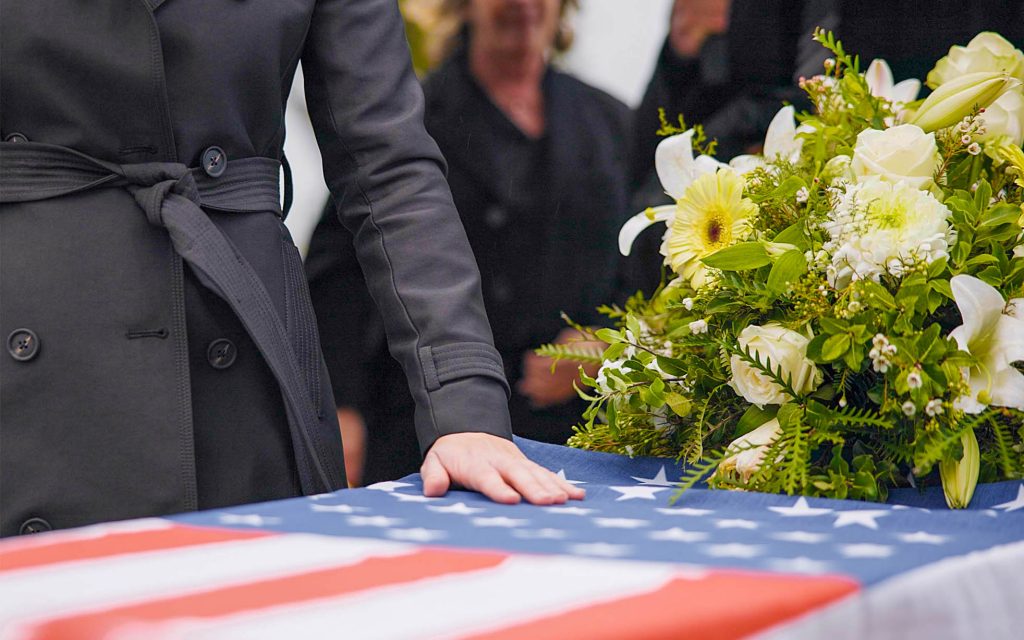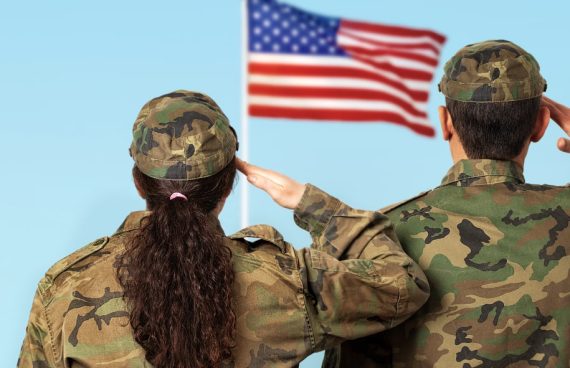Military Funeral Etiquette

Military funerals honor the service and sacrifice of U.S. armed forces members, whether they are active-duty or veterans. While there are many specific traditions and protocols involved, you aren’t expected to know all of them. Here’s a brief guide to what you can expect at a military funeral and some key points of etiquette.
What happens at a veteran’s funeral?
Military funerals follow a set of traditions, regardless of the branch of service. Service members in attendance wear their dress uniforms and are expected to salute at certain moments, such as when the hearse passes, when the casket is moved, during the gun salute, when Taps is played, and when the casket is laid to rest. However, civilians are not required to follow these protocols.
Here’s an overview of what to expect at a military funeral:
The playing of taps
The bugle call “Taps” is an iconic and solemn tradition dating back to the Civil War. Originally used to signal “lights out,” it is now played at military funerals to signify the end of a service member’s life. Taps may be played live or electronically.
The presentation of the flag
The ceremonial folding and presentation of the U.S. flag is a standard part of every military funeral. The flag, draped over the casket, is folded 13 times into a tricorn shape and presented to the deceased’s family after Taps is played. For cremations, the flag is unfolded, held over the remains, and refolded before presentation.
The three-volley salute
The three-volley salute, while optional, is a well-known military funeral tradition. A military honor guard fires three blank rifle volleys into the air, a gesture rooted in a battlefield tradition. Other gun-related honors include the 21-gun salute, which is more formal and reserved for higher-ranking officials.
The military flyover
Reserved for high-profile service members, the military flyover is a rare honor involving military aircraft flying over the gravesite. Typically, only generals, heads of state, or those who performed extraordinary heroics receive this tribute.
Ceremonial statements
During the flag presentation, a service member will make a formal statement to the family, such as:
“As a representative of the U.S. military, it is my high privilege to present to you this flag. Let this flag be a symbol of the appreciation this country feels for the service rendered to our nation by your loved one.”
Combining military and religious funeral rites
Military funeral honors can be combined with religious rites. Typically, religious ceremonies are conducted first, followed by the military honors, such as Taps, the flag presentation, and any optional rites like the three-volley salute or a flyover, before the casket is laid to rest.
Military funeral etiquette
Military funeral etiquette largely aligns with general funeral etiquette. Military personnel should wear their uniforms and salute when appropriate. Civilians should:
- Dress appropriately, preferably in black or dark colors
- Be respectful and offer condolences to the family
- Reflect on how the deceased impacted your life
- Thank the deceased for their service to the country
Military funeral rites
All U.S. armed forces members, active or retired, are entitled to military funeral honors unless they received a dishonorable discharge. For more details on military funeral honors, you can contact the U.S. Department of Veteran Affairs. If you need to plan or pre-plan a funeral, find a cemetery or funeral home near you or call 844-808-3310 for assistance.






 Use current location
Use current location






